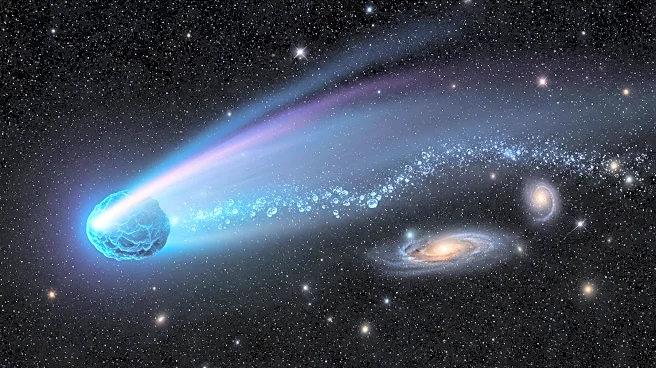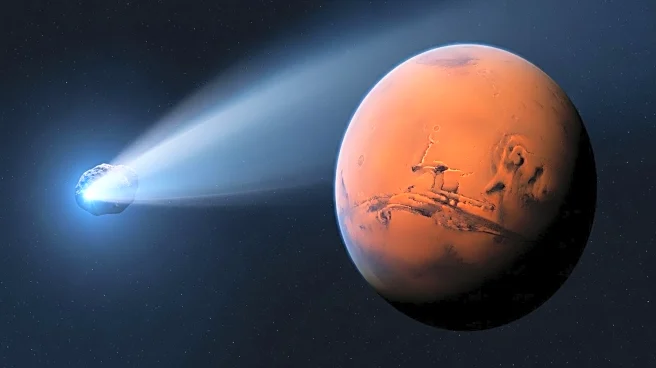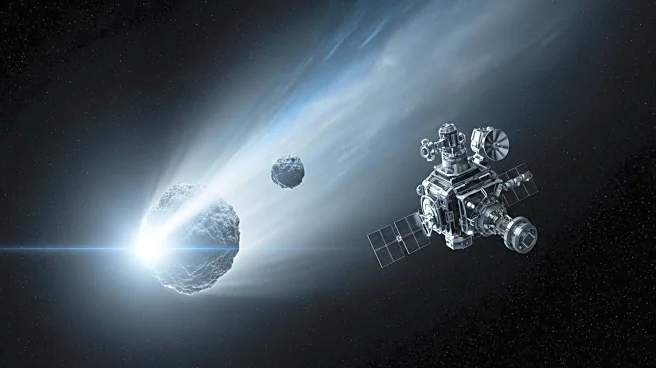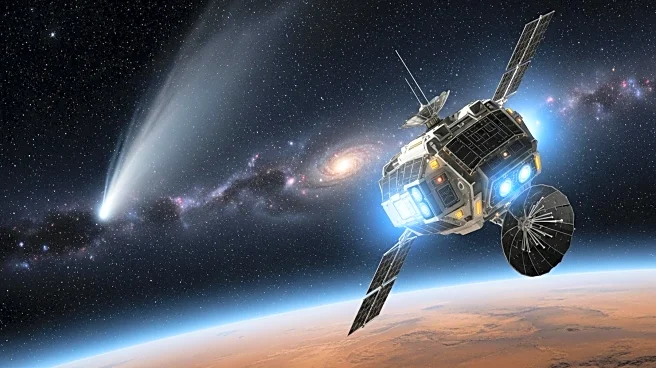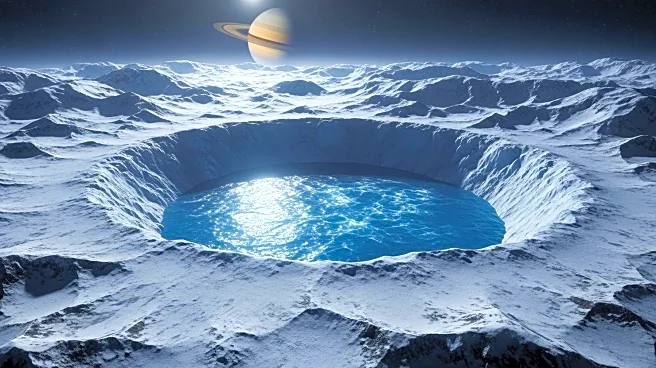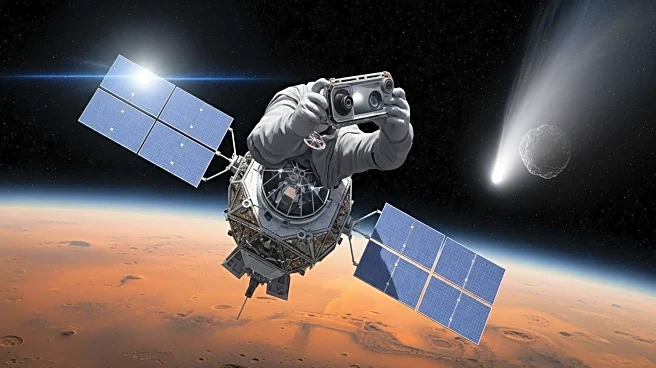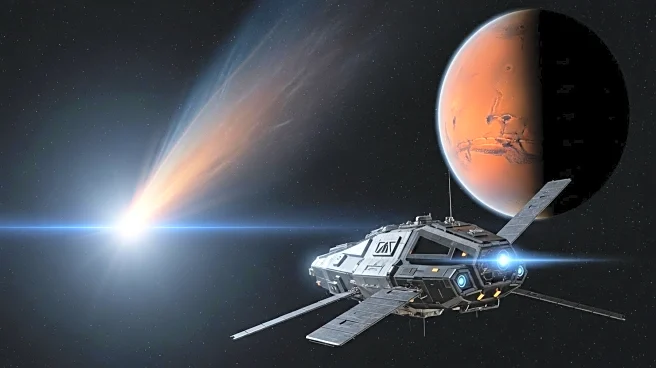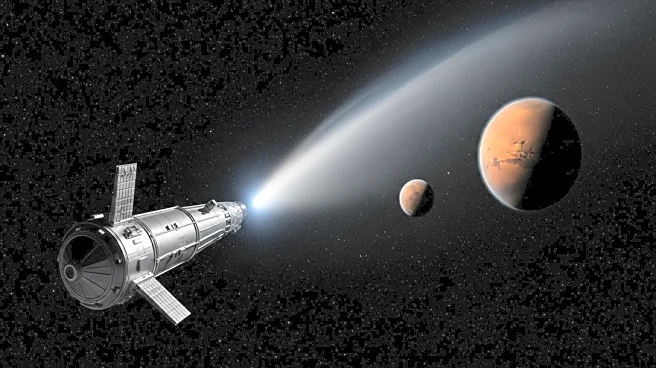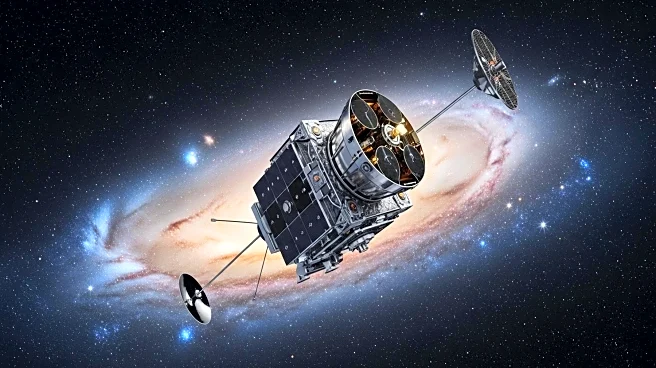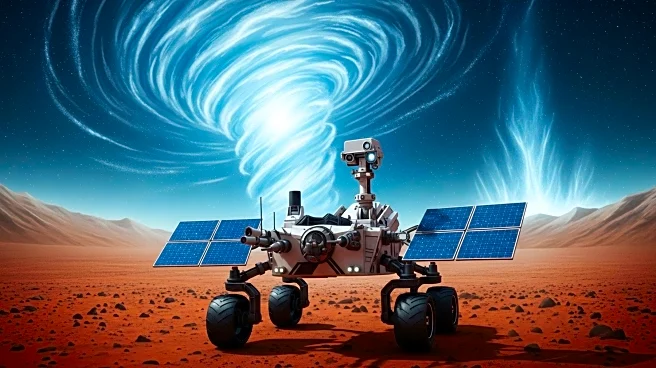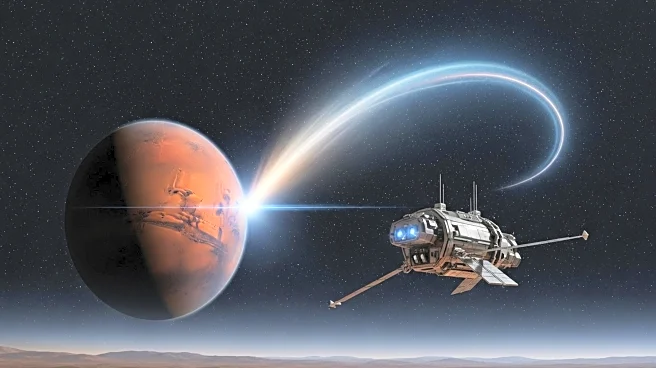What is the story about?
What's Happening?
Interstellar comet 3I/ATLAS is releasing water at a rate comparable to a 'fire hose running at full blast,' according to a new study. Using NASA's Neil Gehrels Swift Observatory, scientists detected the chemical fingerprint of water from the comet, marking it as the third known object from another star system observed in our solar neighborhood. The comet's activity is attributed to icy debris around it, which releases water vapor when exposed to sunlight. This discovery allows astronomers to compare 3I/ATLAS with native solar system comets, offering insights into the chemistry of distant planetary systems.
Why It's Important?
The detection of water in interstellar comet 3I/ATLAS provides valuable information about the chemical composition of objects from other star systems, suggesting that the ingredients for life's chemistry are not unique to our solar system. This finding enhances our understanding of planetary formation and the potential for life beyond Earth. The study of interstellar comets like 3I/ATLAS contributes to the broader field of astrobiology and the search for extraterrestrial life, offering clues about the diversity and complexity of planetary systems across the universe.
What's Next?
The European Space Agency plans to continue monitoring 3I/ATLAS as it approaches the sun, with the Jupiter Icy Moons Explorer (JUICE) set to observe the comet during its most active phase. These observations will provide further insights into the comet's behavior and composition, contributing to ongoing research in planetary science and interstellar phenomena.
AI Generated Content
Do you find this article useful?
